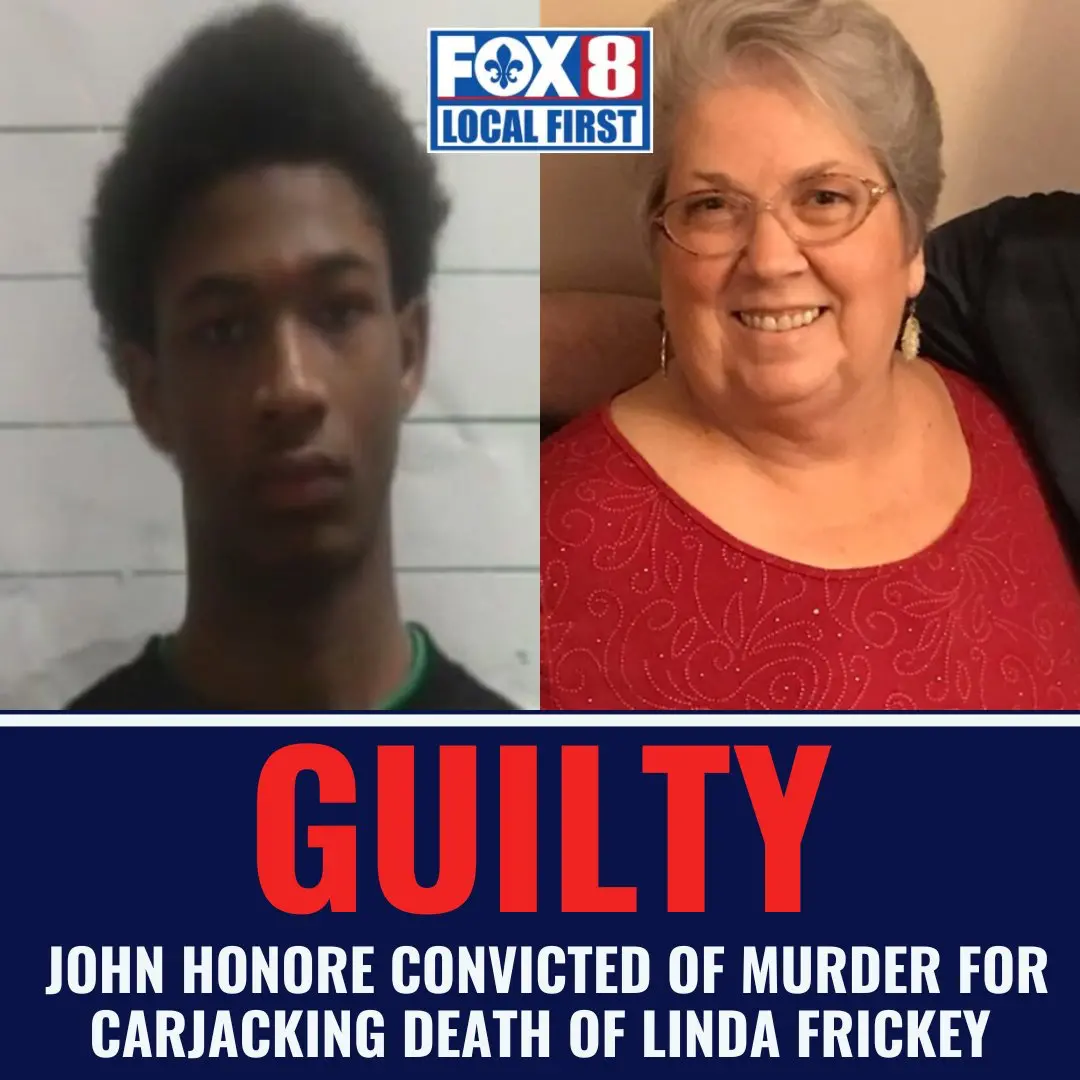During a carjacking, Honore and three teenage girls launched a vicious attack on Frickey. The savagery of their actions was beyond comprehension: Frickey was dragged over 700 feet, her arm severed as she was tangled in her seatbelt. A nearby witness, initially mistaking the scene for a mannequin, was horrified to realize it was their neighbor enduring such torture. “This woman was skinned alive, tortured, and I can’t imagine the pain she went through,” the witness testified.
The trial revealed the chilling details of this atrocity. Prosecutors described the defendant’s merciless actions: “The defendant, after pepper-spraying her, grabs her, pulls her out of her car, puts heel to her face, stomps her on the head, gets on top, punches her, gets into the driver’s seat… Frickey was screaming and pleading for him to stop.” The defense’s plea for leniency due to Honore’s youth starkly contrasted with the brutality of his actions, and his written apology, while expressing remorse, did little to assuage the collective anger and grief of the community.

As the jury returned their guilty verdict after four hours of deliberation, the sense of relief was palpable yet tempered by the enduring pain of loss. Honore now faces a life sentence, a small consolation for a life so cruelly taken.
The tragedy of Linda Frickey’s death has opened a wound in the heart of New Orleans. It’s a stark reminder of the fragility of life and the profound impact of violent crime. The community’s demand for justice is clear: those responsible for such heinous acts must face the full weight of the law.
But beyond the legal ramifications, this case raises unsettling questions about the state of our society. What drives young individuals to commit such monstrous acts? How did we fail to prevent such a tragedy? And most importantly, how do we ensure that the golden years of our elderly are protected with the dignity and safety they deserve?
As we mourn Linda Frickey, let us also resolve to fight for a future where such atrocities are relics of the past, and where the vulnerable are safeguarded with unwavering vigilance. Our hearts go out to the Frickey family, and we stand with them in their quest for justice and peace.
Conclusion: Reflecting on the Role of Race and Media Coverage

This harrowing case leads us to ponder a profound and unsettling question: if the roles were reversed, with the victim being a 73-year-old Black woman and the perpetrators White, would the national media have paid more attention? Similar to the underreported murder of Jonathan Lewis, which can be read about here, this case too received limited national coverage. It’s notable that in most reports, the race of the perpetrators in both incidents was seldom mentioned. This pattern raises critical questions about media biases and the narratives we prioritize. In a society striving for equality and justice, it’s essential to consider how race and identity influence the stories that capture our national attention. As we seek to honor the victims and learn from these tragedies, we must also strive for a media landscape that reflects all facets of our diverse society, ensuring that no victim’s story is overshadowed or ignored due to their race or the race of their perpetrators.

